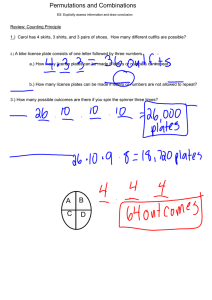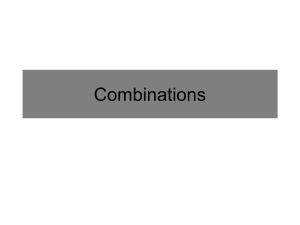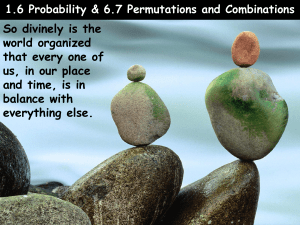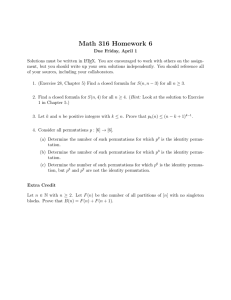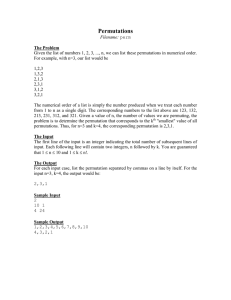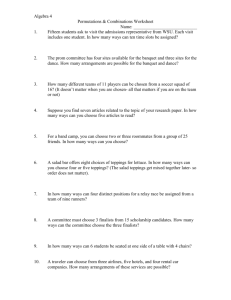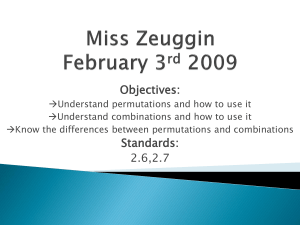6-4 Permutations and Combinations
advertisement
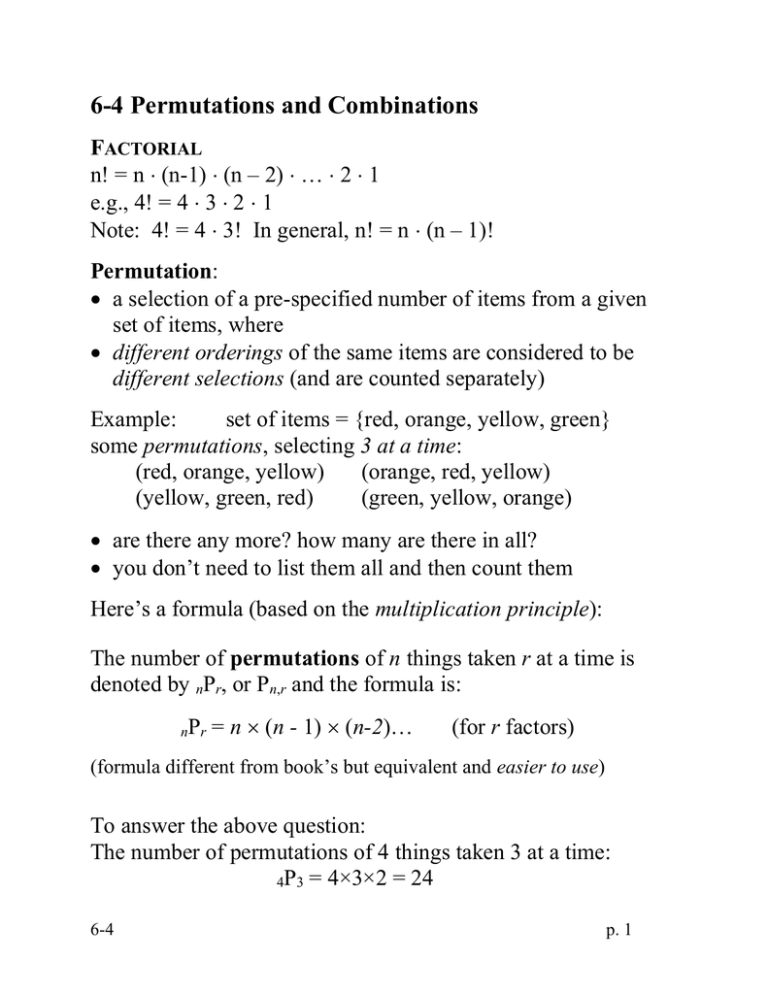
6-4 Permutations and Combinations
FACTORIAL
n! = n (n-1) (n – 2) … 2 1
e.g., 4! = 4 3 2 1
Note: 4! = 4 3! In general, n! = n (n – 1)!
Permutation:
a selection of a pre-specified number of items from a given
set of items, where
different orderings of the same items are considered to be
different selections (and are counted separately)
Example:
set of items = {red, orange, yellow, green}
some permutations, selecting 3 at a time:
(red, orange, yellow)
(orange, red, yellow)
(yellow, green, red)
(green, yellow, orange)
are there any more? how many are there in all?
you don’t need to list them all and then count them
Here’s a formula (based on the multiplication principle):
The number of permutations of n things taken r at a time is
denoted by nPr, or Pn,r and the formula is:
nPr
= n (n - 1) (n-2)…
(for r factors)
(formula different from book’s but equivalent and easier to use)
To answer the above question:
The number of permutations of 4 things taken 3 at a time:
4P3 = 4×3×2 = 24
6-4
p. 1
Combination:
a selection of a pre-specified number of items from a given set
of items, where
different orderings of the same items are considered to be the
same combination (and are not counted separately)
Example:
set of items = {r, o, y, g}
some combinations, selecting three at a time:
(y, r, o) (r, o, g) (r, o, y) NOPE!!! already listed!
are there any more? how many are there?
think about (r, y, g), (y, r, g), etc.
all counted separately as permutations
now counting once as combinations
how many (r, y, g), (y, r, g) etc. pairs are there?
use permutation formula: 3 P3 = 321 = 6
so permutations count 6 times as many outcomes as
combinations do
hence, we need to divide by 6 to get #combinations
4 3 2
answer:
=4
3 2 1
The number of combinations of n things taken r at a time is
denoted by nCr, or Cn,r and the formula is:
r factors
n (n 1) (n 2)...
nCr =
r (r 1) (r 2)...
r factors
(formula different from book’s but equivalent and easier to use)
6-4
p. 2


